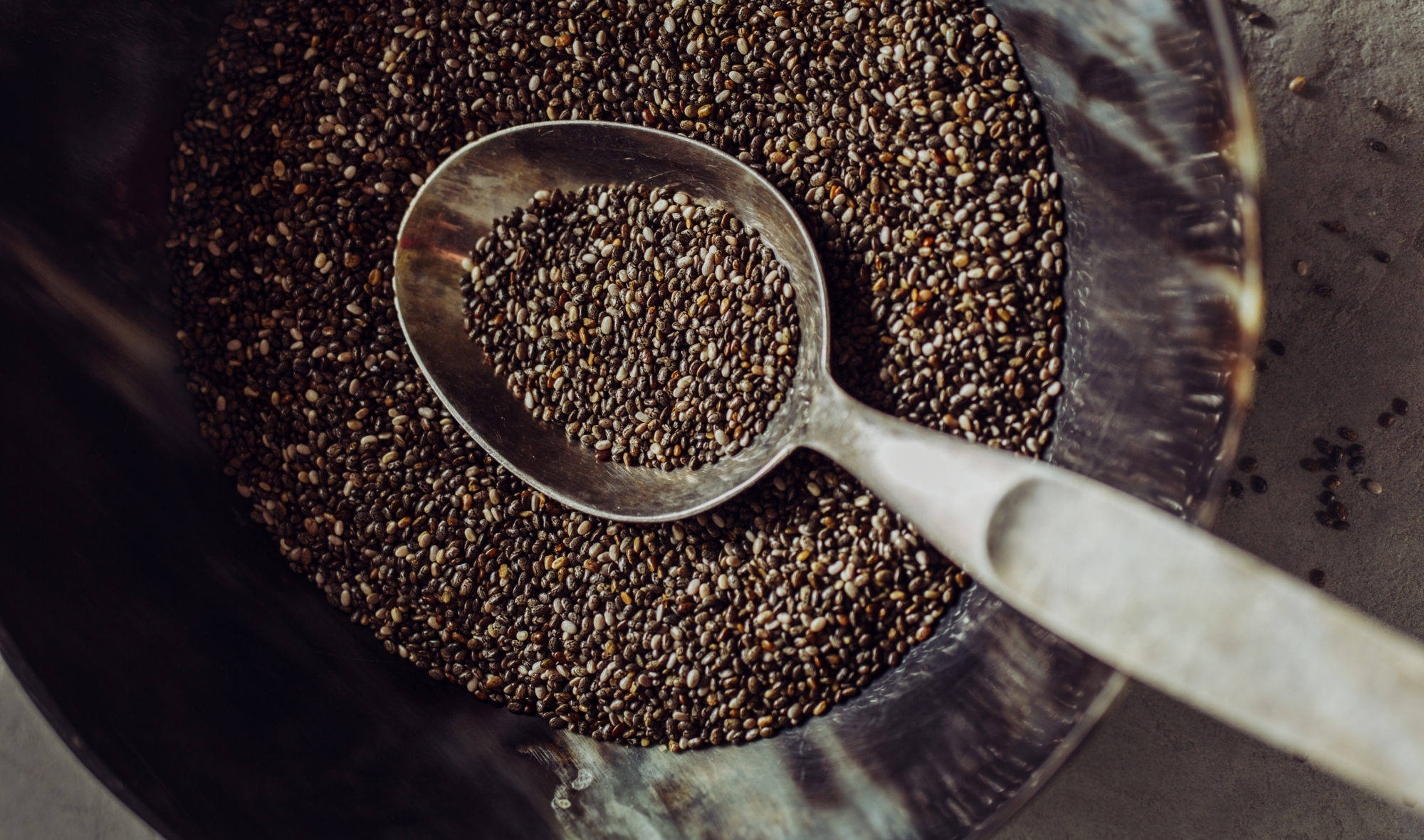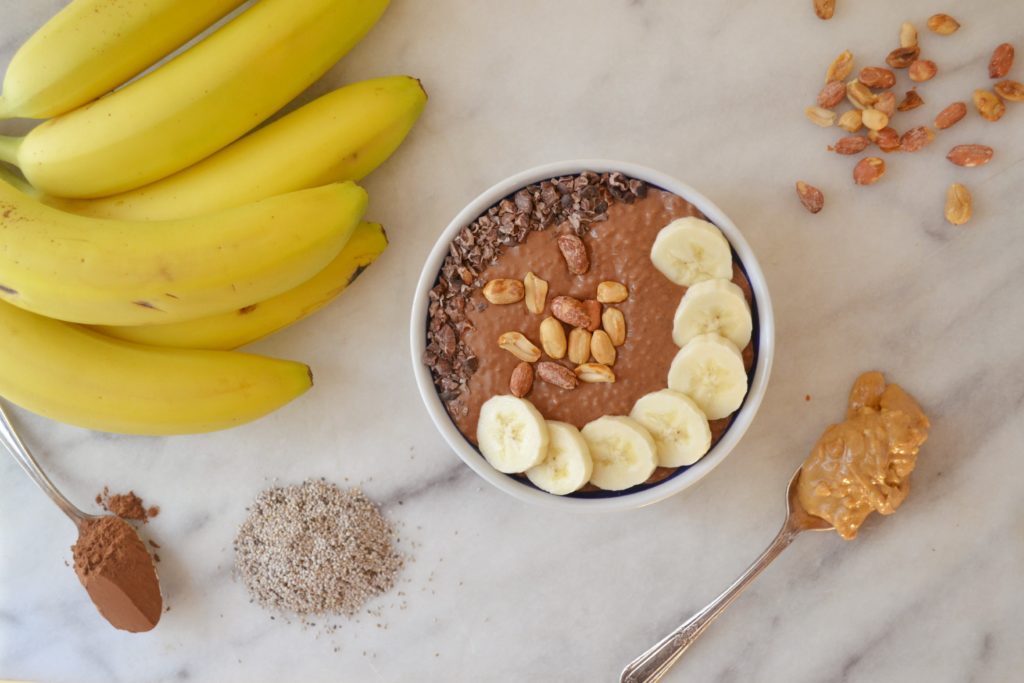
Join PN Level 2 for less than $9 USD/day! Affordable monthly payments now open.

Chia is native to Mexico and Guatemala and was a major staple in the diets of the Mayans and the Aztecs dating back hundreds of years ago. In the 1980’s chia had a brief surge in popularity in the Western world, not as a source of nutrition but as an ornamental plant that sprouted from terracotta figures known as “Chia Pets”. Now, chia is trending again, and for good reason - this tiny seed is rich in fiber, plant-based omega 3’s, and a range of minerals including phosphorus, manganese, magnesium, calcium, and iron. Chia is easy to eat and due to its neutral flavor, can be added to almost anything. However, if left to sit in a wet medium, chia will absorb liquid and turn into a tapioca pudding-like gel, which may be disgusting or delightful, depending on the recipe and your textural preferences.
Chia, a tiny seed in the mint family, has had several popularity “booms”.
The first was in pre-Columbian times. Chia, which is native to Mexico and Guatemala, was a primary food in Aztec and Mayan diets, rivaling even maize as a staple source of nutrition. Chia was a prized crop because it was nutritionally dense and had a long storage life, and was suitable for traveling; both warriors and long distance runners relied on this food to give them energy and stamina.
The second surge came in the 1980’s with the popularity of the sprout-before-your-eyes Chia Pet. For awhile, you couldn’t turn on the TV without hearing , “Ch-ch-ch-chia!” There’s not much more to say about that.
The third peak in chia popularity is now. This trend has been growing for the past decade, and although years ago you could only find chia tucked away in specialty health food stores, now it’s found in most grocery stores, and features as an ingredient in energy drinks, granola bars, cereals, bread, and crackers.
Chia is popular for good reason. Chia is high in fiber and omega 3 fats, it’s easy to prepare, and it’s fun to eat. Although chia can be sprinkled on anything, it is perhaps most famous for its use in chia puddings. Chia can hold ten times its weight in water, and when mixed with liquid, chia quickly swells and gels to create a delightful dish with a tapioca pudding texture. These puddings can be topped with fruit or nuts and make a wonderful, satisfying breakfast.
Chia seeds, which are oval-shaped and less than a millimeter in diameter, come in “white” or “black” varieties. In reality, “white” chia seeds are actually pale grey and “black” chia seeds are a marbled, dark grey. There are no significant flavor or nutritional differences between these two varieties.
If you are nimble-fingered enough to crack open a tiny seed, it would reveal a pale, fat-rich meat with a sweet, nutty flavor similar to flax seeds. When mixed in food, the flavor of chia is nearly undetectable. However, especially if left to sit in a wet medium, chia seeds will alter texture as they absorb the moisture around them and swell into gel-like balls, dramatically thickening whatever medium they were added to.
Two tablespoons of chia (about 28g or one ounce) has 138 calories, 4.7g protein, 8.7g of fat, 11.9g of carbohydrates, 9.8g fiber, and no sugar. Chia is an excellent source of phosphorus, manganese, and magnesium, and a good source of calcium and iron.
As mentioned, chia is also rich in plant-based omega 3’s, containing about 2.5g of omega 3’s per tablespoon.
When purchasing chia, shop at quality food stores with high product turnover. If shopping at bulk food stores, shop at stores with covered bins.
Choose chia seeds that are pale grey or dark grey, and note that speckling and non-uniform coloring is normal. Avoid seeds that are brown, which is a sign of immaturity; these seeds will have less nutritional value than their mature counterparts and will taste more bitter.
Good quality chia will smell and taste sweet and nutty. Detectable bitterness means the seeds are either immature or rancid. Although ground chia seeds are available, whole chia seeds have a longer shelf life and will be less likely to go rancid on the shelves.
If buying packaged chia, read the ingredients. Chia seeds, ground or whole, should not contain any other ingredients.
Also note that although chia is now a feature ingredient in many foods, it does not mean the food is healthy. As with everything you buy, read the ingredients and check nutritional labels to make sure the product meets your own personal quality standards.
Like all nuts and seeds with a high fat content, whole chia seeds will keep best in a sealed container in the fridge or freezer, where they will last six months to a year. If you are planning to consume them within a couple of months, a cool, dark, dry cupboard will be a suitable storage place.
Unlike flax seeds, chia seeds don’t have to be ground in order for you to digest them and extract their nutrients.
Chia seeds can be eaten without any special preparation and sprinkled on salads, soups, or porridges, where, if they aren’t allowed to sit for too long, will retain a pleasant crunchiness. They can also be added to smoothies to boost nutrition and add thickness and texture, or left to gel and then used as an egg replacer in baked goods.
Perhaps most deliciously, chia can be turned into a pudding. Here’s the basic method:
Combine one part chia mixed with four to five parts liquid (you can use regular milk, nut milk, or juice), stir, and allow to “sit”, for at least 20 minutes. Better yet, let it sit for a couple of hours (or overnight). Shorter sitting times will result in a “looser”, grainier pudding whereas letting chia sit longer will allow the seed to absorb liquid to its full glory, creating a thick, tapioca pudding texture.
Top this pudding with yogurt, fruit, nuts, granola, and/or stir in some protein powder. The possibilities are endless! Get creative!

Chia, rich in fiber and omega 3’s, absorbs liquid and swells to create a luxurious pudding texture. Chocolate and peanut butter are an unstoppable flavour team - this is a breakfast that feels like dessert.
Prep Time: 5 minutes Cook Time: 0 minutes Yield: 1 serving
Add milk, cocoa powder, peanut butter, maple syrup, vanilla, and salt to a blender and blend until a smooth liquid is formed.
Pour liquid into a jar and then whisk in chia seeds. Let sit for 15 minutes, then whisk again. Cover the jar and let sit in the fridge for about three hours, or overnight.
Once the chia pudding has set, it is ready to consume!
Add toppings if desired and enjoy!
Precision Nutrition’s Encyclopedia of Food expands every single month as we highlight new foods and showcase beautiful food photography. If you’d like to stay up to date, simply click this link. From there, we’ll send you a FREE copy of our recipe book. We’ll also let you know when new and delicious foods are added to the site.
Chia is native to Mexico and Guatemala and was a major staple in the diets of the Mayans and the Aztecs dating back hundreds of years ago. In the 1980’s chia had a brief surge in popularity in the Western world, not as a source of nutrition but as an ornamental plant that sprouted from terracotta figures known as “Chia Pets”. Now, chia is trending again, and for good reason - this tiny seed is rich in fiber, plant-based omega 3’s, and a range of minerals including phosphorus, manganese, magnesium, calcium, and iron. Chia is easy to eat and due to its neutral flavor, can be added to almost anything. However, if left to sit in a wet medium, chia will absorb liquid and turn into a tapioca pudding-like gel, which may be disgusting or delightful, depending on the recipe and your textural preferences.